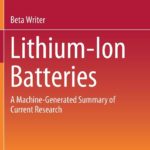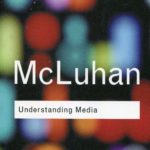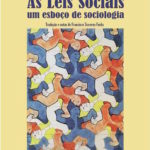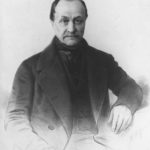![É brincadeira, mas é sério (Haraway 2018 [1996]) É brincadeira, mas é sério (Haraway 2018 [1996])](https://www.laspa.slg.br/wp-content/uploads/2022/06/neibart.png)
É brincadeira, mas é sério (Haraway 2018 [1996])
HARAWAY, Donna. 2018. Modest_Witness@Second_Millenium. FemaleManC_Meets_OncoMouseTM: feminism and technoscience. New York: Routledge. [1996]
GENES R US
Let me tell a parochial story, which travels widely, about turgid and hardened entities. Like toys in other games, Genes R Us, and “we” (who?) are our self-possessed products in an apotheosis of technological humanism. There is only one Actor, and we are It. Nature mutates into its binary opposite, culture, and vice versa, in such a way as to displace the entire nature/culture (and sex/ gender) dialectic with a new discursive field. In that field, the actors who count are their own instrumental objectifications. Context is content with a vengeance; autonomy and automation interface intimately. Nature is the program; we replicated it; we own it; we are it. Nature and culture implode into each other and disappear into the resulting black hole. ManTM makes himself in a cosmic act of onanism. The nineteenth-century transfer of God’s creative role to natural processes, within a multiply stratified, hegemonically Christian, industrial culture committed to relentless constructivism and productionism, bears fruit in a comprehensive biotechnological harvest in which control of the genome is control of the game of life itself—legally, mythically, and technically. The stakes are very unequal chances for life and death on the planet. (Haraway 2018:149-50)
THE SELF-BIRTH OF MAN (and the virus-joker)
In his wonderful cartoon image advertising an electrophoresis system, a middle-aged, white, bedroom-slipper-and-lab-coat-clad man cradles a baby monkey wearing a diaper [Figure 4.1]. Addressing an audience outside the frame of the ad, the scientist holds up a gel with very nice protein fragment separation generated by the passage of charged molecules of various sizes through an electrical field. The gel is part of a closely related family of macromolecular inscriptions, which include the DNA polynucleotide separation gels, whose images are familiar icons of the genome project. In my reading of this ad, the protein fragment gel metonymically stands in for the totality of artifacts and practices in molecular biology and molecular genetics. These artifacts and practices are the components of the apparatus of bodily production in biotechnology’s materializing narrative. My metonymic substitution is warranted by the dominant molecular genetic story that still overwhelmingly leads unidirectionally from DNA (the genes) through RNA to protein (the end product). In a serious and persistent joke on themselves, the kind of joke that affirms what it laughs at, molecular biologists early labeled this story the Central Dogma of molecular genetics. The Central Dogma has been amended over the years to accommodate some reverse action, in which information flows from RNA to DNA.“Reverse transcriptase” was the first enzyme identified in the study of this “backward” flow. RNA viruses engage in such shenanigans all the time. HIV is such a virus; and the first (briefly) effective drugs used to treat people with AIDS inhibit the virus’s reverse transcriptase, which reads the information in the viral genetic material, made of RNA, into the host cell’s DNA. Even while marking other possibilities, the enzyme’s very name highlights the normal orientation for control and structural determination in higher life forms. And even in the reverse form, Genes R Us. This is the Central Dogma of the story of Life Itself. […] In the Neibart cartoon, while the scientist speaks to us, drawing us into the story, the monkey’s baby bottle is warming in the well of the electrophoresis apparatus. The temperature monitor for the system reads a reassuringly physiological 37°C, and the clock reads 12:03. I read the time as five minutes past midnight, the time of strange night births, the time for the undead to wander, and, as Evelyn Keller suggested, the first minutes after a nuclear holocaust. Remember the clock that the Bulletin of Atomic Scientists used to keep time in the Cold War; for many years it seemed that the clock advanced relentlessly toward midnight. As Keller argued persuasively, the bomb and the gene have been choreographed in the last half of the twentieth century in a complex dance that intertwines physics and biology in their quest to reveal “secrets of life and secrets of death” (Keller 1992a:39–55). […] In the electrophoresis system ad, of course, Neibart’s image suggests a reassuring family drama, not the technowar apocalypse of secular Christian monotheism or the Frankenstein story of the unnatural and disowned monster. But I am not reassured: All the conventional rhetorical details of the masculinist, humanist story of man’s autonomous self-birthing structure the ad’s narrative. The time, the cross-species baby, the scientist father, his age, his race, the absence of women, the appropriation of the maternal function by the equipment and by the scientist: All converge to suggest the conventional tale of the second birth that produces Man. It’s not Three Men and a Baby here but A Scientist, a Machine, and a Monkey. The technoscientific family is a cyborg nuclear unit. As biologist—and parent—Scott Gilbert insisted when he saw the ad, missing from this lab scene are the postdocs and graduate students, with their babies, who might really be there after midnight. Both monkey and molecular inscription stand in for the absent human product issuing from the reproductive practices of the molecular biology laboratory.The furry baby primate and the glossy gel are tropes that work by part-for-whole substitution or by surrogacy. The child produced by this lab’s apparatus of bodily production, this knowledge-producing technology, this writing practice for materializing the text of life, is — in fruitful ambiguity — the monkey, the protein gel (metonym for man), and those interpellated into the drama, that is, us, the constituency for E-C Apparatus Corporation’s genetic inscription technology. […] I over-read, naturally; I joke; I suggest a paranoid reading practice. I mistake a funny cartoon, one I like immensely, for the serious business of real science, which surely, my professional self duplicitously asserts, has nothing to do with such popular misconceptions. But jokes are my way of working, my nibbling at the edges of the respectable and reassuring in technosciences and in science studies. This nervous, symptomatic, joking method is intended to locate the reader and the argument on an edge. On either side is a lie — on the one hand, the official discourses of technoscience and its apologists; on the other hand, the fictions of conspiracy fabulated by all those labeled “outsider” to scientific rationality and its marvelous projects, magical messages, and very conventional stories. In the end, the joke is on us. Inside and outside are lies. The edge is all there is, and we, inhabitants of the hypermodern cities of technoscience, are surely on it in the late twentieth century. As John Varley (1986) put it in his paranoid SF story, all we have to do is “Press Enter •”. (Haraway 2018:151-4)
Twentieth-Century U.S. Biological Kinship Categories […] 1975–1990s [..] Discourse of relation to other species […] Viruses are information vectors that link us all.
(Haraway 2018:219-25 Table 6.1)





 O LaSPA é sediado no Instituto de Filosofia e Ciências Humanas (
O LaSPA é sediado no Instituto de Filosofia e Ciências Humanas (